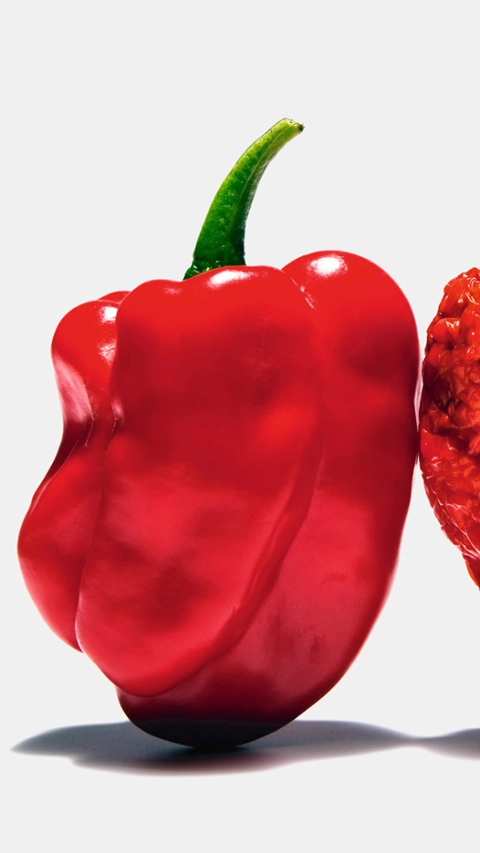Waste not, want not
Food preservation began with simple salting and heating. Today it is a high-tech industry in a balancing act between technology and the garbage can.
Thousands of years before ready meals and E numbers, humans were applying natural processes to stop food from spoiling and keep it safe to eat for longer. Traditional techniques of food preservation worked well, even if people did not understand the science behind them.
Today we know that salt removes moisture, thus slowing down decomposition caused by bacteria; wood smoke contains phenol, a preserving chemical found in coal tar; and pickling vegetables in brine creates lactic acid, high acidity being another great way to keep food fresh.
5 foods that don’t go off

Consumers want to move away from chemicals, while food safety legislation is becoming more restrictive.”
From the 18th century, chemicals that stop food spoiling, including the useful family of organic carboxylic acids, were extracted from naturally occurring substances such as ants, saltpeter, salt, berries and coal tar. These molecules and their derivatives gave us many of the classic preservatives that accompanied food mass production – including nitrates, sulfites, benzoates and sorbates – many of which are still in use today. By the end of the 19th century, they were being produced on an industrial scale by BASF and others, while scientists had isolated and named the principal bacteria that cause food poisoning, including Clostridium botulinum, Escherichia coli and the Salmonella species, and food safety legislation was introduced in many countries.
Today, without food preservation techniques it would not be possible to provide consumers with fresh produce on a consistent basis year-round, and a large quantity of the food grown and produced would be wasted. Take apples, for example. By treating them with the synthetic plant growth regulator 1-MCP (1-methylcyclopropene), which slows ripening, they can be stored for up to a year, meaning that more of the harvest is enjoyed by consumers. Preservatives are not just an add-on. They enable the food industry to cope with fluctuating weather and peaks and troughs in demand.
Longer life
From foil-lined paper and aluminum cans to sophisticated plastic wrappings, packaging extends the life of many fresh foods and reduces food waste.

Sources: foodsafety.gov; modifiedatmospherepackaging.com; perfotec.com; cannedtuna.com; bpf.co.uk; vakuumverpacken.de; dairysafe.vic.gov.au; Petrus et al., 2010; thechocolatejournalist.com
Falling under suspicion
However, despite the benefits food preservation has brought, many of the chemicals used to keep food safe for longer have come under increasing scrutiny, and some traditional food preservatives have fallen from favor. Benzoates and nitrates, used to preserve beverages, pickles, fruit juices and cured meats, have been associated with carcinogenicity. Connections are being made between preservatives and hypersensitivity, hyperactivity, allergies and asthma.
“Fresh” apples
How long after picking are apples still fresh? That depends on how they are stored and treated. We compare three methods.
The list of causes of suspected food intolerance is growing. Sulfites, used to preserve dried fruits, as well as wine and beer, were banned from fresh produce by the American Food and Drug Administration in 1986, and since 2016 must be labelled for consumers in the European Union as potential allergens. Meanwhile, what are known as synthetic anti-oxidants are viewed with suspicion by the public.
In response to food regulation and consumer health fears, including the growing “clean food” movement, food manufacturers are changing formulations. It is not just salt and sugar content that is being reduced. Nitrates and benzoate are being replaced with alternatives such as sorbates, citrates and the “natural” antioxidant vitamin E and its derivatives, tocopherols.
Mari Carmen Alamar, PhD, lecturer in postharvest biology at Cranfield University, England, says consumers are becoming more discriminating and increasingly averse to chemicals being added to what they eat. They are less concerned about physical imperfections in fruit and vegetables than in the past, and are looking instead for food that tastes good. This poses a challenge. “Consumers want to move away from chemicals in the final product, while at the same time food safety legislation is becoming more and more restrictive,” says Alamar.
Best before …

Andrew Parry
Special advisor, Food and Drink, Waste and Resources Action Programme (WRAP), United Kingdom.
Is it still safe to eat?
“Best before,” “sell by” and “use by” dates on food labels are intended to help consumers make this decision. But confusion about what they mean results in food being unnecessarily thrown away. One of WRAP’s missions is to help reduce this waste.
How much food do people throw away in their homes?
In the United Kingdom, people throw away 7 million tons of food a year. The bulk of this is inedible parts of food and leftovers, but at least 2 million tons goes straight into the bin because it is spoilt or thought not to be suitable or safe to eat. This is partly due to food being stored incorrectly – like putting bread in the fridge where it goes stale faster – but around a third is because people don’t understand the difference between the “best before” date, which is about quality, and “use by,” which is about food safety.
How are you tackling this problem?
We have produced new guidance on date labels and storage to make them less confusing for consumers. It includes some simple icons for businesses to use, such as a snowflake logo to indicate which foods are suitable for freezing, and it helps consumers understand what labels mean.
Is progress being made?
It is. Compared to 2007, over 1 million fewer tons of food are being wasted each year by households – a really significant drop. Also, retailers have moved away from “buy one get one free” offers in favour of lower everyday pricing, and it’s now far more common for supermarkets to sell fruit and vegetables that are not aesthetically perfect. It’s being marketed as “ugly,” “wonky,” or “less than perfect.” Consumers like it.
WRAP is an organization based in the United Kingdom and established in 2000 to encourage recycling and reduce food waste.
Packaging that preserves
One answer has been innovation in food packaging. Styropor®, a form of expanded polystyrene invented by BASF in 1951, has proven ideal for packaging chilled, short-shelf-life foods. Modified atmosphere packaging, which replaces the normal air in a package with a protective gas mix, provides another way of delaying the ripening of fruits, and thus reduces the amount that is thrown away before it is consumed.
However, innovations such as these have come with an unintended side effect. “This is a good technology,” says Alamar. “But while the gas mix may reduce food waste without chemicals, the plastic film increases plastic waste.” Efforts are now focused on developing new forms of packaging with a lower environmental impact. One example is a biomass balanced version of Styropor, which is made using biogas from organic waste, rather than virgin fossil fuels. The concept, says Gregor Haverkemper, BASF’s Director of Global Marketing for Styropor, is to reduce significantly the carbon footprint of a product which is indispensable to the world’s food industry. “It has great insulation properties and retains a constant low temperature, so it’s fantastic for products like ice cream, fish, and fruit and vegetables. It is also 98 percent air, and fully recyclable,” he says.
Beyond recyclability, the hunt is on for compostable food packaging. Another new particle-foam food-packaging material developed by BASF, ecovio® EA, meets this challenge. It is manufactured from plant-based materials, including a biodegradable polymer, ecoflex®. “We are really excited about this,” says Haverkemper. “The packaging breaks down naturally in municipal composting facilities.”
Mechanical and electromagnetic technologies as an alternative
Ensuring food safety, reducing food waste, and minimizing the impact on the environment remains the ultimate goal, and some new solutions are emerging. Mechanical and electromagnetic technologies have already been adopted as an alternative or in addition to chemical preservatives. High-pressure processing gives sealed fruit juices a longer shelf-life, and atmospheric cold plasma – which involves applying high voltages to products in their packages – kills harmful bacteria such as listeria without damaging the food. At the cutting edge of food preservation innovation, methods have been developed that use ultrasound, shockwaves, membrane filtration, and electrolysis to render the microorganisms that spoil food inactive.
It is our job as food scientists to explain the science and dispel scare stories.”
The science is advancing, but the key driver of innovation in food preservation technology, according to Vibeke Orlien, associate professor in the University of Copenhagen’s Department of Food Science, Denmark, will always be consumer expectations. New ways will have to be found to extend the shelf-life of fresh produce, she says, yet some innovations will be met with resistance by consumers. The public, she notes, tends to be afraid of anything new and “scientific” when it is yoked to the stuff of life. “Some people falsely believe that applying ionizing radiation to food, as we do in Europe for herbs and spices, makes it radioactive, for example. Yet the World Health Organization has confirmed that it is safe. Our job as food scientists is to explain the science so as to dispel scare stories,” Orlien says.
Chemicals save lives
Whatever new technologies appear, we should be cautious about dispensing with chemicals that have a proven track record of protecting us from harm, according to Hugh Pennington, emeritus professor of bacteriology at the University of Aberdeen, Scotland. Food poisoning is still a globally significant cause of illness and death. In the United States alone, according to the Center for Disease Control, it causes 76 million illnesses, 325,000 hospitalizations and 5,000 deaths a year.
Pennington believes that, in our quest for the “clean” and “organic,” we risk forgetting that chemistry has saved millions of lives. He says: “Unless there is robust scientific evidence for reducing or removing traditional preservatives, I think we should leave them alone.”

Food that never reaches our plates
Unaffordable loss
Roughly one-third of the food produced globally for human consumption is lost or wasted every year, according the Food and Agricultural Organization of the U.N. (FAO) – waste we cannot afford. How does it happen?
Annual consumer food waste per capita varies from region to region.

Which food groups go to waste most globally?




At which stage in the value chain is food lost or wasted?


How nature preserves
The inhibitors
Fresh for longer – the powers of perservation that nature provides.
At some point after it has been harvested or produced, nearly all food starts degrading. Exposure to air starts the process of oxidation, or microorganisms begin to grow causing food to spoil and, in some cases, become poisonous. Preventing these processes or slowing them down keeps food fresh and safe for longer. Nature provides several ways of doing this that humans have adopted and adapted.

Vitamin E – the great antioxidant
Found in wheatgerm oil, egg yolk, and leafy vegetables, vitamin E is a fat-soluble chemical with antioxidant properties. It extends the shelf life of many foods, like baked goods and dairy products, as well as fish, vegetable and citrus oils, by preventing oxidation. BASF is the world’s original supplier of natural Vitamin E and mixed tocopherols, under the product name Covi-Ox®.
Honey – the secret of eternal life?
Honey not only has a seemingly eternal shelf life, it can also be used to preserve other foods and organic matter. The ancient Egyptians used it to preserve precious seeds, as well as to embalm the bodies of their dead. Archeologists recently found 4,000-year-old berries and nuts preserved in honey in a grave site in Georgia. The preservative effect is believed to be not just because of the high concentration of sugar, which is antibacterial, but also because of the natural antibiotic substances found in honey.


Propionic acid – from fermentation to preservation
Propionic acid is a natural by-product of digestion. Cows and even humans produce it in their digestive tracts. The manufactured version is used to prevent the formation of mold in feed grain and silage. Transformed into its calcium salt it also helps keep packed bread fresh. BASF is the world’s leading producer of propionic acid.
Formic acid – an antibacterial agent
Ants spray acid to ward off their enemies and anaesthetize their prey. Known as formic acid, after the Latin name for ant, formica, it is a natural preservative and antibacterial agent. The English naturalist John Ray first distilled formic acid in 1671 by heating dead ants in a flask. Today, it is manufactured industrially from carbon monoxide and water as a preservative for the animal feed industries. The world’s biggest producers of formic acid are still the ants, but in the human world, it’s BASF.







